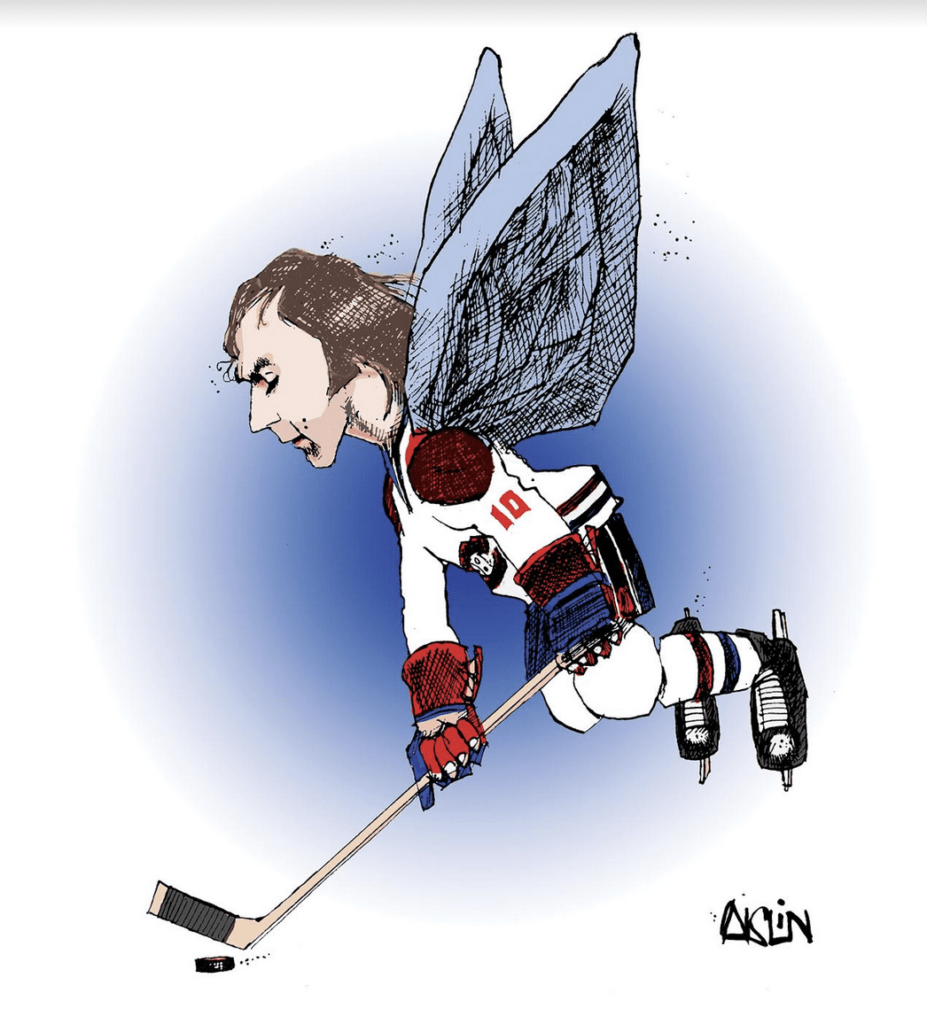A Fond Farewell to the Kid From Thurso

L. Ian MacDonald
April 22, 2022
On the north shore of the Ottawa River, about one quarter of the way between Gatineau and Montreal, sits the long-time pulp and paper town of Thurso, Quebec, which, if Guy Lafleur hadn’t been born there, would’ve remained best-known for the classic Canadian aroma found downwind of all paper towns.
But Guy Lafleur was born in Thurso (locally pronounced tsur-SEW) and he never forgot where he came from, even as he ascended to the heady firmament of Montréal Canadiens hockey fame.
In the late 1980s, the Thurso arena was named for Lafleur, in a ceremony attended by the prime minister of the day, Brian Mulroney.
“He was the kid from Thurso,” Mulroney said Friday morning after hearing of Lafleur’s passing. “He was a wonderful man, a selfless guy. He was a happy warrior. He generated such pride and affection in all Quebecers. You could see that. It was a privilege to have known him.”
In the pantheon of Habs hockey heroes, there are three who stand out above the rest, for different reasons above and beyond their stats and greatness on the ice.
Most of all, Lafleur will be remembered for his style and speed, so fast that hockey announcers developed abbreviated play-by-play calls. Instead of “he shoots, he scores!”, just two words sufficed:
“Lafleur scores!”
And then the echo in the Forum: “Guy, Guy, Guy!”
His signature moment, still heard after all these years.
Maurice Richard often said he was “just a hockey player.” But after all, he was “The Rocket”, a trailblazer for the emergence of Quebec’s distinct identity from the rest of Canada.
Most of all, Lafleur will be remembered for his style and speed, so fast that hockey announcers developed abbreviated play-by-play calls. Instead of ‘he shoots, he scores!’, just two words sufficed: ‘Lafleur scores!’
Jean Béliveau was “Le Gros Bill”, hockey’s majestic prince, the greatest ambassador in the history of the game. Big Jean’s name is on the Stanley Cup a record 17 times, 10 as a player — including five as captain — and another seven as a team executive after he hung up his skates. No one else will ever come close.
And there was Lafleur, “The Blonde Demon”, or “the Flower”, the most electrifying goal scorer of them all. And where did that come from?
It came from Thurso, where local legend has it that, as a boy, Lafleur would sneak into the arena before opening and practise skating and scoring by himself on the dimly lit rink.
At the passing of Richard in 2000 and Béliveau in 2014, the crowds came by the thousands to the Bell Centre to attend what amounted to their laying in state by the capital of hockey. And their services were akin to state funerals, attended by prime ministers and premiers. Their coffins, draped in the Canadiens flag, were accompanied by their teammates.
And so, it will undoubtedly be for Lafleur, who has passed at 70, a victim of lung cancer that resulted from a lifetime of smoking, and was apparently never in remission after his diagnosis in 2019.
Being Lafleur, he never complained about it, and just got on with his life. While not unexpected, his death was still somewhat shocking. Though he belonged to the aging baby boomer generation, he is recalled for the dazzling speed of his storied career, in which he is forever young.
You can count on the Canadiens to celebrate his life over the next several days. No one stages these memorial events better than owner Geoff Molson and his team. The fans will walk by his statue at the entrance to the rink. The trophies Lafleur won will undoubtedly be on display. The number 10 that hangs from the rafters will be in the spotlight.
Guy Lafleur will be eulogized for many things, especially his humility. Outside the Aréna Guy Lafleur in his hometown, a statue stands without a pedestal, the blades of the skates directly touching the ground, as requested by its subject.
It’s how the kid from Thurso wanted to be remembered.
Ian MacDonald, editor of Policy Magazine, is a lifelong Canadiens fan.
